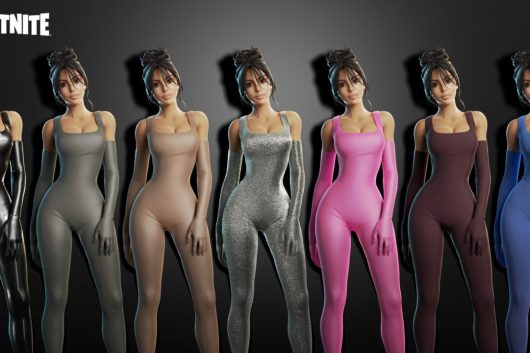

**Fortnite Chapter 7: The Ascendance of Kim Kardashian’s Renowned Skin**
Fortnite, the highly acclaimed battle royale experience, keeps enthralling gamers with its continually changing offerings. Chapter 7 has unveiled numerous new elements and cosmetics, with one of the most discussed arrivals being the Kim Kardashian skin, a member of the game’s Icon series. Released on December 13, this skin has quickly established itself as a favorite among users, reportedly adopted by around 5% of the player base, based on data from Fortnite.GG, an independent platform that organizes game statistics into easily understandable formats.
### Analyzing the Popularity
The Kim Kardashian skin has attracted considerable attention and use in a remarkably short span. For reference, it stands as the leading skin in Chapter 7 and ranks 70th in the all-time usage of Fortnite cosmetics. This astonishing ranking is particularly noteworthy considering its limited time availability and the competitive array of character skins available in the game. Trailing Kardashian in popularity is the Backlash skin, recognized for its perceived tactical benefits due to its camouflage attributes in specific game zones.
The Kardashian bundle is priced at 3,000 V-Bucks (approximately $19), providing not only the Iconic Kim Kardashian skin—which showcases a black latex catsuit reminiscent of her SKIMS collection—but also a standard skin variant, a variety of accessories, emotes, and a glider. In spite of some views on Kardashian’s style being lackluster, the design is distinguished by its meticulous attention to detail and diversity.
### Customization and Community Interaction
What notably distinguishes the Kim Kardashian skin is the vast array of customization possibilities offered. Players can modify her appearance using a variety of styles and colors. The Iconic skin can assume multiple variations, from tank tops to turtlenecks, and players can choose from an assortment of hair styles and shades. This degree of personalization resonates with Fortnite’s varied community, especially among female gamers and LGBTQ+ participants, who value the chance to showcase their creativity within the game.
Additionally, the gameplay experience has been enriched by the whimsical cultural references associated with Kardashian. Creative interpretations, such as recreating memorable moments from her reality series, have been widely disseminated across platforms like TikTok, further enhancing the skin’s allure. The community flourishes on the playful nature of these exchanges, promoting shared experiences as players team up, each showcasing different interpretations of the Kim aesthetic.
### Conclusion
The introduction of Kim Kardashian’s skin to Fortnite highlights the game’s nimble capacity to weave pop culture into its fabric. With an ideal fusion of customization, community engagement, and cultural significance, the skin has rapidly secured popularity and tangible use among players. Available until December 28, the Kardashian bundle exemplifies how collaborative and immersive Fortnite continues to be, attracting players and nurturing profound, meaningful interactions within the vibrant game universe. As the season unfolds, it will be fascinating to observe how this trend shapes future cosmetics and collaborations.
READ ARTICLE
















